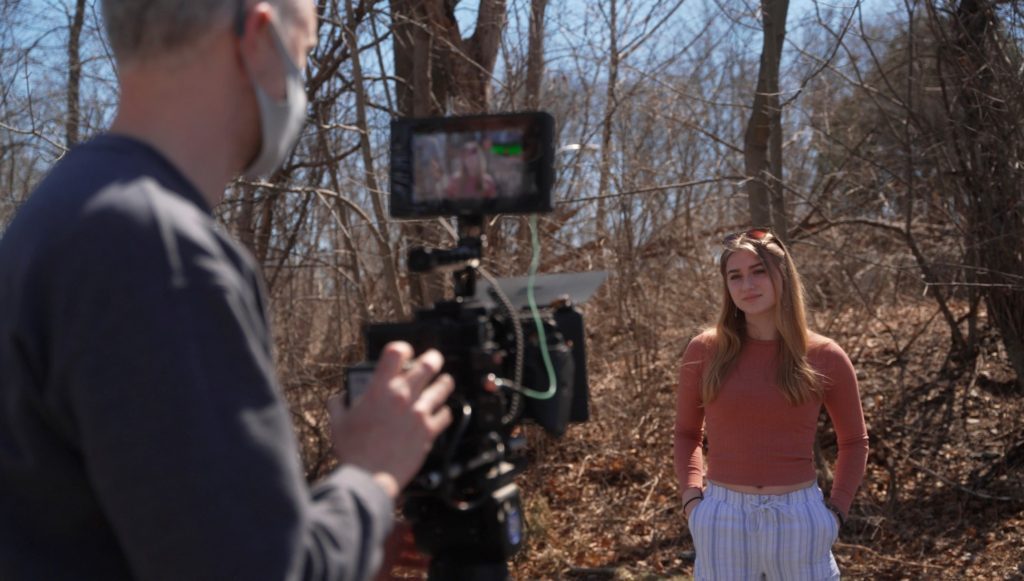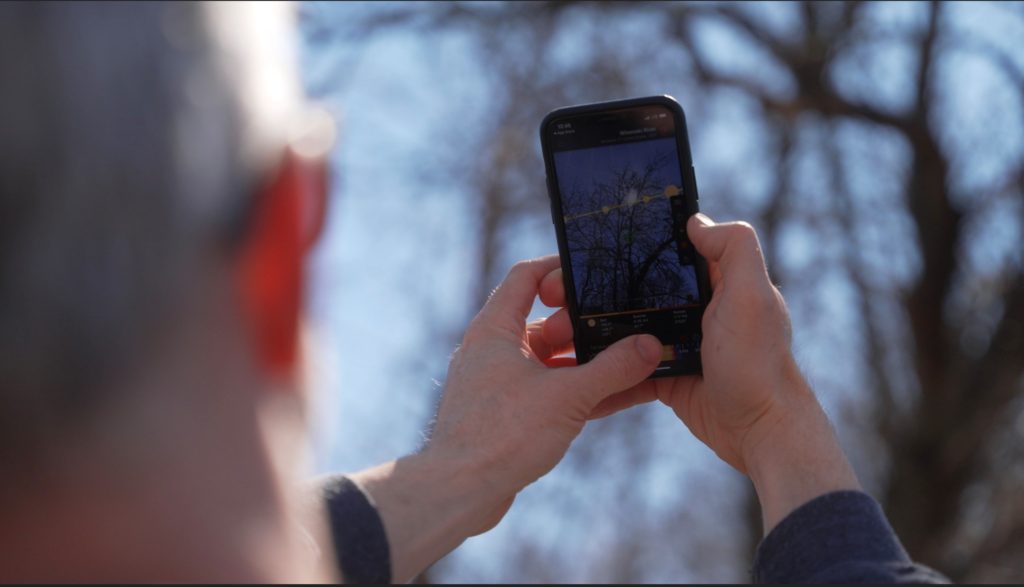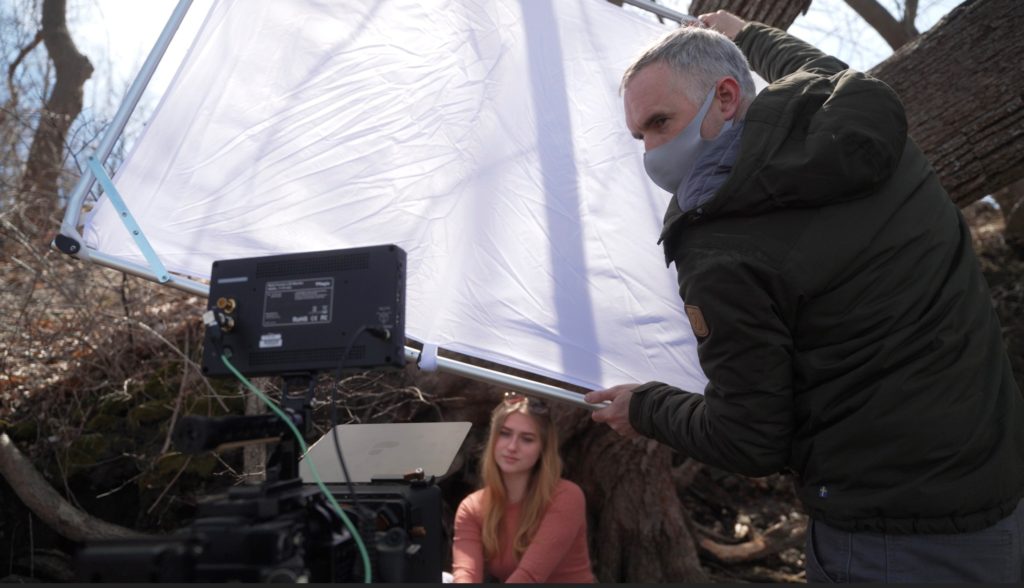Stories arguably happen in the outdoors more than they do inside. For characters to go anywhere and do anything, the real heart of a story, they need to leave the safe confinements of their homes and offices, and get out into the real world. Natural light cinematography carries its own variety of risks and rewards.
You must work with or against the sun, a light source unlike any other. Techniques and experience you have developed in the safe confines of the studio must be relearned in an unforgiving and ever changing environment.
But with risk comes great reward – some of the greatest and most visually arresting films have heavily featured the outdoors. From Lawrence of Arabia’s sweeping desert vistas to the Revenants stunning ice landscapes. Natural light shooting allows the prepared cinematographer to create unforgettable images.

Practical Considerations
Once you leave the studio, everything becomes harder. Power has to be carried as batteries, or generated with fuel. Picturesque locations are rarely next to roads, so gear must be hauled into position, and needs to be protected in transit. This can cost a huge chunk of your shooting time, and effects when you have to call ‘wrap’. Unless you want to haul everything out again in the dark.
Sun position is constantly changing. Weather is always a factor, not just rain but wind, cold, heat and humidity. Seasons affect the look of the environment, but don’t always occur at the same time every year. The Revenant was delayed by almost a year and cost tens of millions of dollars more when insufficient snowfall led to relocating the entire shoot from Alaska to Chile.
Weather
Rain is not something that you can shoot in unless you have specifically prepared your camera and lenses for. Rain jackets or water housings are available for most cameras, but you will also need undercover areas. A location where you can change lenses and dry off wet equipment.
Wind is also constant on outdoor shoots. Diffusion panels, even the work horse 4×4 silk or bounce catches the wind like a sail. It can tip a sandbagged c-stand if a gust of over 5 knots hits it at the right angle. Wind, more than rain, can be catastrophic because a c-stand tipping over at any height has enough force to kill a cast or crew member.
If in doubt, “Man-bagging”, or having a crew member put their weight on a stand, is standard way to secure stands in gusts and is much quicker than loading 200 lbs of sandbags on a stand. If the crew member can’t hold it against the wind, they can at least give early warning before something falls.

Time of day
There are a lot of apps available for tracking the path of the sun, and predicting where it will be when. Sunseeker light is free, but the paid version allows you to see with augmented reality in your camera to frame a shot and see where the sun is and how to best utilize it.

Because sunlight is so bright, even late in the day, the standard natural lighting technique is to use the sun as a backlight, use the ambient light as fill and to use a reflector or daylight balanced source as the key light. This gives a natural look without needing huge diffusion to control the sun’s power.
A more minimal version of this is to use the sun as backlight, the ambient level as key and to bring in negative fill, in the form of black fabric hung on a stand or suspended on a frame, to bring down the fill level on the camera near side of the subject. This gives a more natural look than a bounce key and requires less equipment, but gives a less punchy look.
Because of the sun, a lot of natural light cinematography solutions involve taking light away rather than adding it. Negative fill can be great for this, not just on a frame but draped on the ground to reduce bounce and give a subject more shape. Duvatine is a specified, flame resistant fabric used in the film industry. Although, any dark, non-reflective material will do, including bulk fabric off cuts or curtains.
Because time of day is so critical, and the angle of the sun may only be suitable for an hour at a time, page counts take a big hit once you move into the natural environment. On a typical network TV show with standing sets, filmmakers expect to shoot around 10 pages a day. On a feature film, this drops to around 3. Outdoors, you may get this, or you may get nothing at all. Emainual Lubeski talked about the production of tree of life “We may get something, we may not’. Shooting under these circumstances, DPs need to work with producers to manage expectations.
Mirrors, Bounce and Diffusion
Just because we can’t control the position of the sun doesn’t mean we have no control. There are a wide variety of tools to shape, bounce and reflect the sun to better utilize its power.
Mirror boards can reflect the sun’s light to where we need it. You can even use several mirrors to bounce light around, tinting them with more warmth or gel. Further separating your subject from the background.
If you want to create a large source to illuminate a large subject, such as a group of people, you’ll need a large piece of fabric. Either to reflect the sun, or allow the sun to pass through. 12×12 bounce is a standard on commercials, but rigging one of these takes at least 3 grips and several stands. A 6×6 is much more achievable for a small crew and can be help by 2 people.

Gold Standard
Golden hour is a favorite time to shoot because of the vivid colors in the sky, but it is the hardest time to capture the sun’s light. It is so low on the horizon and often obstructed by objects like trees and buildings. The advent of LED technology means you can bring your own sun in the form of battery powered mono lights. Easy to carry and run off battery, and can be placed out of frame and dialed in to give a sunset look. Especially bi-color ones tuned to 3200k (a typical sunset temperature)
Final Thoughts
Natural light cinematography is both the easiest and hardest form of filmmaking. It’s simple to get a sufficient exposure and see what is happening in front of the camera. However, it can be painstakingly difficult to achieve a cinematic image when there are so many factors outside of our control. The only way to master this illusive art is to test, prepare and always be practicing.
Read more:

